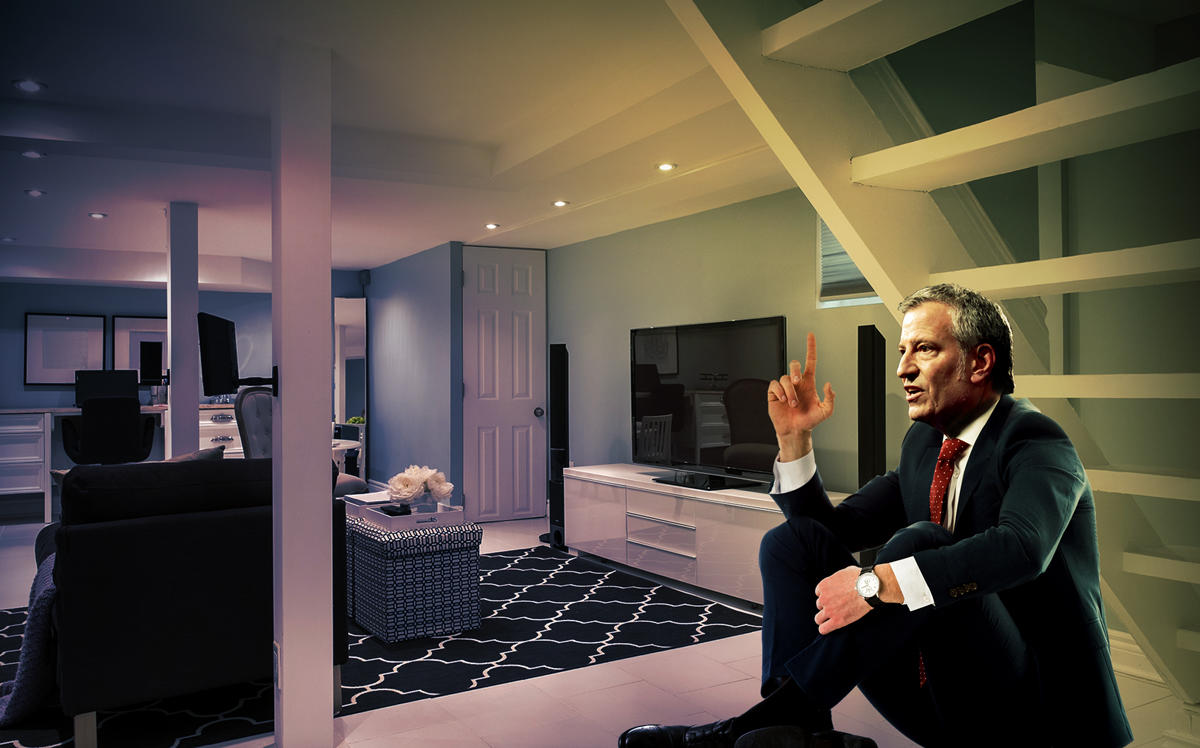 Illegal basement apartments seen as one answer to NYC housing shortage
Illegal basement apartments seen as one answer to NYC housing shortage
Trending
Challenges threaten de Blasio plan to legalize basement units
Mom-and-pop landlords face high costs, city bureaucracy

Across the city, tens of thousands of people live in illegal basement apartments. The de Blasio administration aims to turn these units into legal affordable housing, but it’s not clear how the city will address the challenges associated with bringing these units up to code.
Earlier this month, Mayor Bill de Blasio proposed a citywide legalization initiative that would build on a pilot program launched in East New York last year. The mayor projects that it will add 10,000 affordable units over the next decade.
However, financial and logistical obstacles abound, including high costs, engineering issues, a lack of political will to shutter illegal apartments, and persuading homeowners to let the city randomly choose their tenants.
Read more
 Illegal basement apartments seen as one answer to NYC housing shortage
Illegal basement apartments seen as one answer to NYC housing shortage
 Queens overrun with illegal basement apartments
Queens overrun with illegal basement apartments
Experts say upgrading a basement or cellar unit can cost tens of thousands of dollars. The city’s building code requires, among other things, ceiling heights of at least eight feet, windows in every bedroom and many other rooms, a sprinkler system and at least one exit in basement apartments and two in cellars.
(Basements are partly below curb level but have at least half of their height above it. Cellars are more than half below curb level.)
“This idea has been kicked around for a while, but there’s no actual proposal of how it’s going to work or how it’s going to be safe,” said Stuart Saft, leader of Holland & Knight’s real estate group. “Even if money was no object, even if the city came along and said ‘we’ll pay for it,’ you still have the logistical problem of doing it.”
Though the mayor hasn’t released specifics on his plan, he has indicated that the city will fund low-interest loans for homeowners to bring below-ground units up to code. Jane Meyer, a spokesperson for the mayor, said the projects would be subject to regulatory agreements that lay out income restrictions in the same manner as other city-financed projects.
Former city planner Eric Kober, a fellow at the Manhattan Institute, was skeptical that subsidized loans would be enough to incentivize landlords to legalize already-occupied units.
“You could raise the fines and penalties, but then you have to be willing to throw people out on the street,” Kober said, referring to tenants in illegal apartments. “And that raises a whole other set of issues about what happens to that household.”
Meyer said the change wouldn’t result in a “crackdown” but that the city would ensure New Yorkers are living in safe homes. But, to Kober’s point, it is not clear how that could be done without evicting tenants. For political reasons, that would require the mayor to find them better housing — something he is already trying to do so for about 70,000 homeless people.
Kathryn Wylde, president and CEO of the Partnership for New York City, called the mayor’s proposal a “an important use of existing assets.”
“To make this work, you need local community oversight, whether it’s contracting with local not-for-profits, to identify the homes so that it doesn’t become an ICE situation — it doesn’t become an excuse for finding concentrations of undocumented immigrants,” she said.
The mayor’s call for making the legalized units affordable means they would be awarded by the city via housing lotteries to tenants meeting income guidelines. That might discourage some mom-and-pop landlords accustomed to choosing their own tenants.
Annetta Seecharran, executive director of Chhaya Community Development Corporation, which has long advocated for the legalization of basement apartments and helped shape the East New York pilot program, said her organization is drafting a blueprint for citywide application that will be released in the coming weeks.
She acknowledged that East New York owners have been slow to convert their spaces, but said the pilot has helped suss out the logistics of renovating basement and cellar units.
Will Spisak, director of programs at Chhaya, said the blueprint will recommend allowing ceiling heights of seven feet and permitting homes within transit areas to avoid a requirement to provide off-site parking with the addition of a new apartment. Under the East New York pilot, ceiling heights of seven-and-a-half feet are allowed, as well as seven feet on a case-by-case basis.
Because many properties have already maxed out their developable space, the group will suggest exempting converted cellar units from counting toward a building’s overall floor-area-ratio.
“We’re not changing the footprint of the house. We’re just making the space livable,” Spisak said.
Seecharran also believes a specialized unit should be created to oversee the basement apartment program, noting that the city’s Department of Housing Preservation and Development might not have the capacity to handle its rollout. For now, though, details remain scarce.
“It’s lovely to say let’s legalize it,” Saft said, “But how?”




